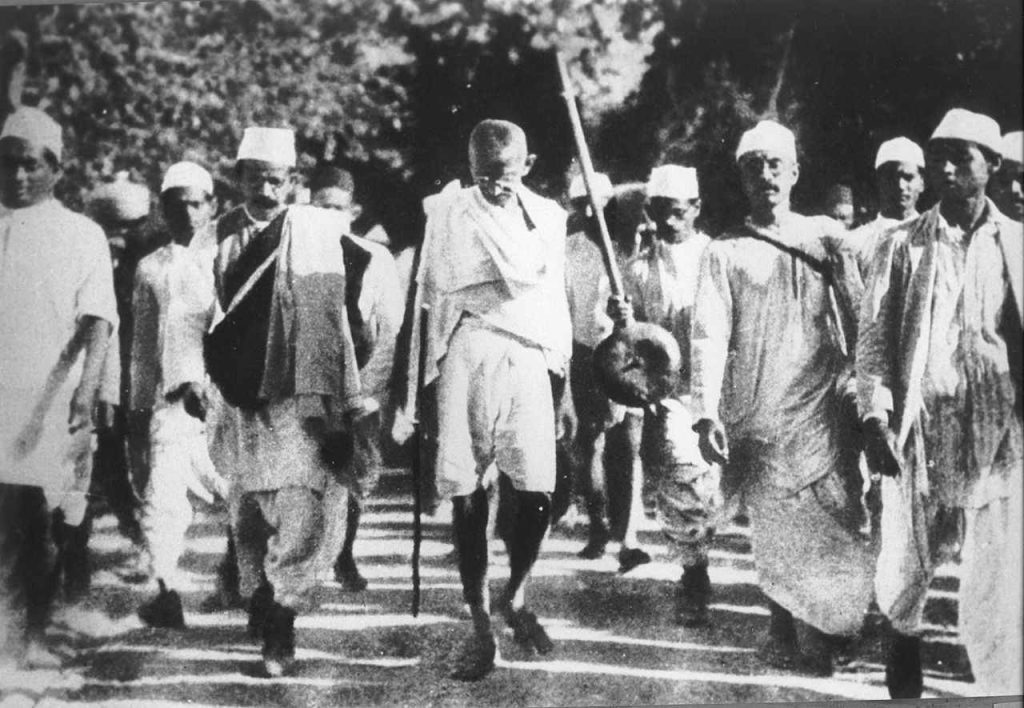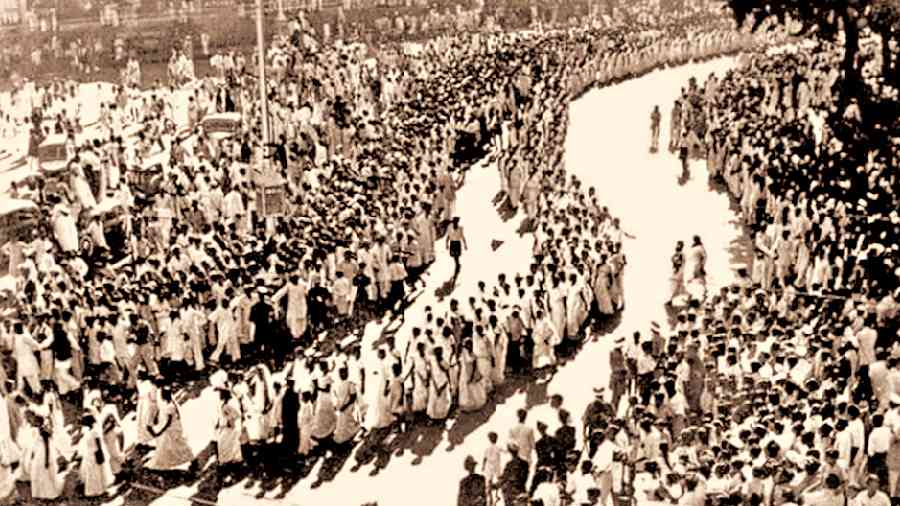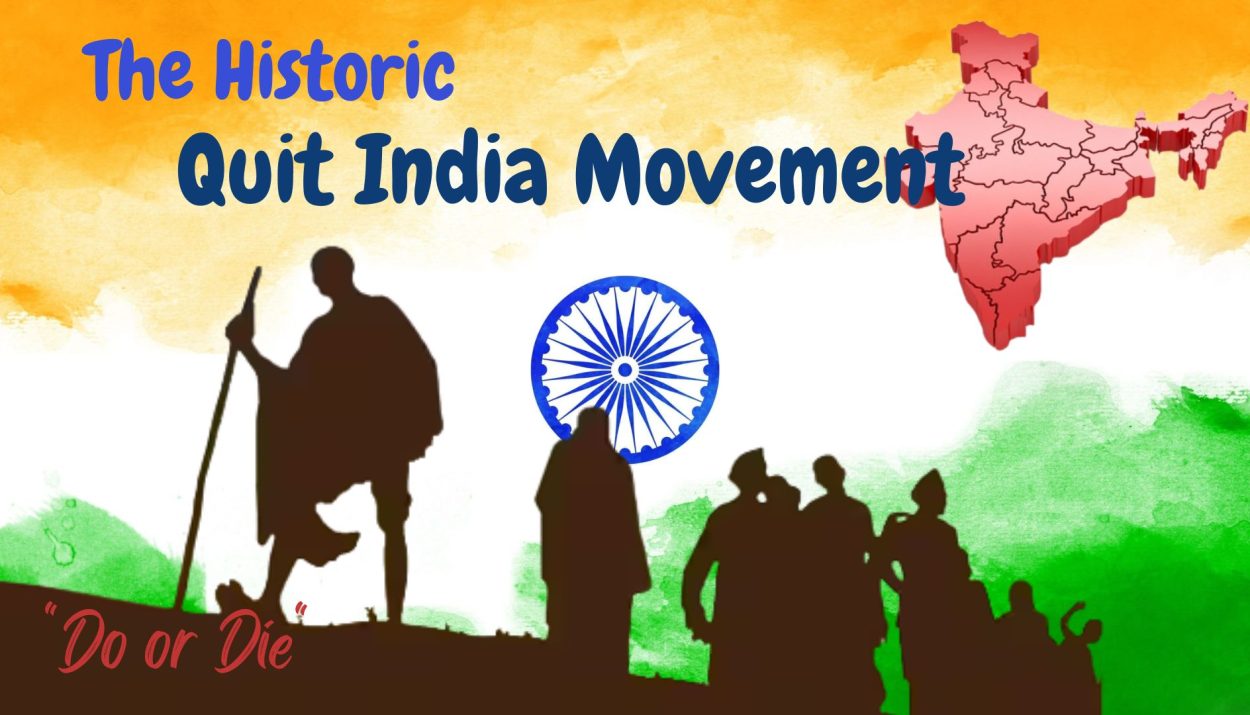The Quit India Movement, also known as the August Movement, was a pivotal chapter in India’s struggle for independence from British colonial rule. Launched on August 8, 1942, under the leadership of Mahatma Gandhi, this movement aimed to secure immediate and complete independence for India. It was a defining moment in the country’s history, as millions of Indians united to express their collective determination to be free from foreign domination. “Do or Die: The Historic Quit India Movement” marked a turning point in India’s struggle for independence against British colonial rule.
The Context
By the early 1940s, India had been under British rule for nearly two centuries. The Indian National Congress (INC) and other nationalist movements had been advocating for self-rule, but their demands were repeatedly thwarted by the British government. The onset of World War II brought additional hardships to India, as the British imposed restrictions and demanded full cooperation in the war effort without granting any significant political concessions.
In a significant event at the Gowalia Tank Maidan, also recognized as August Kranti Maidan, Mohandas Karamchand Gandhi initiated the ‘Quit India’ movement. This momentous occasion took place during the All-India Congress Committee session held in Bombay on August 8, 1942, where Gandhi delivered his renowned “Do or Die” speech, marking a pivotal step in India’s quest for freedom from British colonial rule. The appeal was simple yet powerful, urging Indians to peacefully demonstrate their determination to secure freedom.

The Course of the Movement
As soon as the movement began, the British government responded with a heavy-handed approach, arresting prominent leaders, including Gandhi himself. However, the arrests only served to galvanize the people further. Mass protests, strikes and demonstrations spread throughout the country, and the spirit of non-violent resistance became the hallmark of the movement.
The British authorities responded with repression, using police brutality and military force to suppress dissent. The ensuing clashes between protesters and the British forces resulted in numerous casualties and arrests. Despite the adversities, the Quit India Movement maintained its resilience, with people from all walks of life coming together in a united front.
Role of Women
One remarkable aspect of the Quit India Movement was the significant participation of women. Women played an instrumental role in leading protests, organizing strikes and even providing medical aid to those injured during the movement. Their active involvement marked a turning point in recognizing the importance of women’s rights and empowerment in the struggle for independence.
Read- Women in war
Impact and Legacy
The Quit India Movement did not immediately lead to India’s independence, but it left an indelible mark on the course of the freedom struggle. It showcased the unyielding spirit of the Indian people and their readiness to sacrifice everything for the nation’s liberation. It indicated an increasing feeling of solidarity and resolve among Indians to liberate themselves from British rule. Additionally, this movement played a role in diminishing the British Empire’s grip on India, while also underscoring the necessity for a reexamination of colonial policies after the war.

The British government began to realize the futility of continued control over India, and the movement eventually paved the way for the country’s independence on August 15, 1947.
Moreover, the Quit India Movement became a source of inspiration for subsequent civil rights and freedom movements worldwide. Its non-violent approach to seeking change influenced leaders like Martin Luther King Jr., Nelson Mandela and Aung San Suu Kyi, who applied similar principles in their respective struggles.
Conclusion
The Quit India Movement was a defining moment in India’s struggle for freedom, illustrating the power of unity, resilience and non-violent resistance. It remains a symbol of the nation’s determination to break free from the shackles of colonialism and assert its rightful place in the world. As India continues to grow and evolve, the legacy of the Quit India Movement serves as a constant reminder of the sacrifices made by countless individuals in their pursuit of a free and independent India.
Also, read
The manufacturing process of Neodymium magnets?






